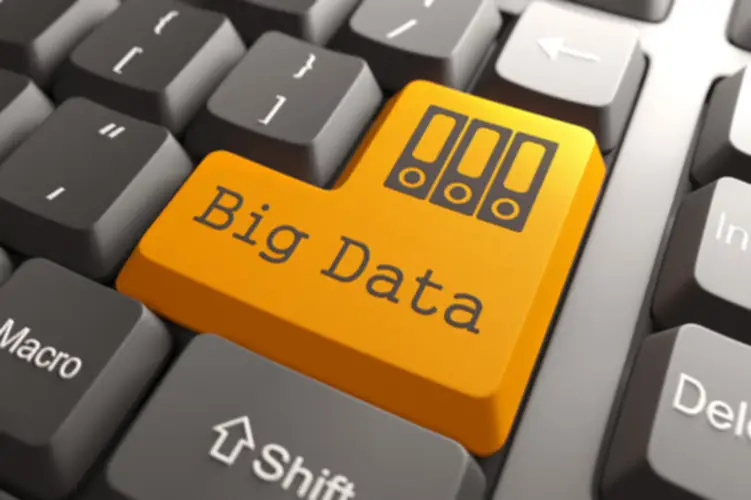What’s Operational Intelligence Oi? Temporary Introduction
Transform Your Business With AI Software Development Solutions https://www.globalcloudteam.com/ — be successful, be the first!
Integration Of Data From Totally Different Sources
Implementing an industrial operational intelligence solution from scratch (including a knowledge warehousing infrastructure, analytics modules, data assortment throughout network nodes and its integration right into a centralized repository) usually requires vital initial investments. The preliminary investments in implementing an OI platform embrace artificial general intelligence the prices of hiring and retaining extremely qualified information talent, implementation of hardware infrastructure, licensing or improvement of the software program, and so forth. Operational intelligence (OI) is an umbrella term that describes numerous kinds of techniques and approaches to information analysis primarily based on data regenerated and processed in actual time. Businesses, organizations and industrial facilities use information generated by OI solutions to enhance visibility, optimize workflows and enhance overall efficiency of enterprise operations. OI functions are primarily targeted at front-line employees who, hopefully, could make better-informed enterprise choices or take quicker motion on issues if they have access to well timed business intelligence (BI) and analytics information. Examples include call-center brokers, gross sales representatives, on-line advertising teams, logistics planners, manufacturing managers and medical professionals.

Defining & Improving Your Security Posture
Proper software of OI enables industrial facilities to achieve high-quality monitoring and supervision of all major processes, product creation and supply. The most advanced operational intelligence methods out there at present mix data from quite a few sources, typically analyzing millions of data factors every single day or more. The data is offered and made actionable for front-line analysts and IT personnel via the usage of visual dashboards. Dashboards could be operational intelligence technology tailored to the wants of the company or the particular job perform of the person, and they can be set as much as present knowledge in a variety of ways. OI systems combine with present enterprise analytics to make sure that insights and actions are delivered within the operational context of a company. Artificial intelligence (AI) and ML algorithms are used to predict developments, prescribe actions, and automate decision-making.
Choosing The Right Instruments And Technologies
You can feed knowledge and evaluation from OI software into BI tools to get a broader picture of your business. Automation technologies integrate into OI techniques to trigger actions primarily based on the insights derived from information analysis. Orchestration tools are required to reply to events by deploying resources, adjusting configurations, or triggering processes with out human intervention. Integration of real-time climate analytics is imperative for groups, followers and crew safety. Blending weather intelligence with different types of information such as ticket gross sales, meals and beverage stock, local weather management and custodial prices might help improve efficiencies and revenue margin.
- Here are a quantity of key questions that ought to assist you to to select industrial OI tools and applied sciences that would be one of the best fit.
- While massive knowledge is useful in some ways, there are still many organizations that struggle to harness the analytical alternatives provided by big information.
- The dashboards proven in this blog have been constructed using Analytics Plus, ManageEngine’s AI-enabled IT analytics software.
- However, IT involves a extremely complex set of instruments, technologies, and functions that work in unison to energy companies from the again finish.
Retail makes use of operations intelligence to acquire necessary insights relating to supply chain issues, logistics, and merchandising, as well as customer behavior. Real-time e-commerce web site monitoring and user conduct analysis are other ways that OI is utilized in retail. When it involves using industrial operational intelligence, the manufacturing sector is setting the standard. Manufacturing amenities may perform continuous monitoring because of industrial OI, which collects information from the manufacturing unit floor and incorporates sensible sensors into tools, methods, and procedures. An event-centric approach to data evaluation, coupled with a continuous flow of recent data that empowers employees members to be extra productive and make better choices in real time, is a elementary commercial benefit of operational intelligence. Operational intelligence is the analysis of information generated or collected in real-time by an organization’s IT infrastructure.
Manufacturing businesses nonetheless face challenges with real-time end-to-end monitoring despite these developments. Certain areas of the manufacturing flooring proceed to be opaque and segregated, making knowledge inaccessible with out halting production to look at equipment in particular person. Meanwhile, OI applications excel at monitoring the manufacturing unit ground, instantly detecting gear malfunctions or deviations from your production schedule.
By serving to B2B businesses to proactively stop problems and handle customer expectations, real-time operational intelligence options can tremendously enhance the shopper experience. For instance, a correctly applied RtOI resolution can instantly present the data a buyer calls with questions on a transaction, eliminating the need for drawn-out searches and raising buyer satisfaction. These are just some examples of how operational intelligence can transform a business or an industry.
Modern-day OI platforms that are used in industrial environments sometimes include a number of parts that operate in combination with one another, accumulating, processing and analyzing knowledge, and delivering the analysis outcomes to the front-line teams and particular person staff. Conventional BI techniques assist the analysis of historic information that has been cleansed and consolidated in a knowledge warehouse or knowledge mart before being made obtainable for business analytics uses. BI purposes typically goal to tell company executives and enterprise managers what happened in the past on revenues, earnings and other KPIs to aid in budgeting and strategic planning. Organizations that have an effect on prospects, reduce application and system downtime by way of more environment friendly and effective troubleshooting and enhance the customer expertise via real-time insights and reporting.
Stream processing applied sciences can buffer, course of, transform, and retailer streaming knowledge at excessive pace while continuously moving it in the path of analytics. They embrace advanced event-processing applied sciences that may establish patterns and relationships throughout a quantity of streams of real-time knowledge. If all that is needed is a glimpse at historical efficiency over a really specific time period, existing BI options should meet the requirement. However, historic data needs to be analyzed with occasions which are taking place now or to reduce the time between when intelligence is obtained and when action is taken, then Operational Intelligence is the extra acceptable method.
Leveraging knowledge analytics and real-time monitoring offers actionable insights from real-time information, driving digital transformation and optimizing enterprise useful resource planning (ERP) systems. Ensuring strong cyber safety further safeguards operations, making RtOI indispensable for modern, aggressive companies. In business settings operational intelligence acts as a type of enterprise intelligence that can be utilized to achieve real time insights into numerous enterprise processes and procedures.

Competing urgent calls for, limited assets, and upper management expectations solely add to a business’ wrestle to establish the best priority information for its needs. Achieving the delicate stability between the standard and speed of information evaluation is probably considered one of the most difficult features of implementing OI. Organizations with strict information quality requirements will discover it particularly time-consuming to organize knowledge for the evaluation needed to obtain meaningful insights with OI. The knowledge assortment prioritizes capturing each side of system operations, from utilization metrics and person interaction to machine performance and environment data. Awareness and visualization of the present state of enterprise operations routinely reduces dangers across the board.

Most plants use a collection of transactional techniques, such as ERPs, PLMs, or CRMs, to support their processes however lack a typical, centralized data repository to connect the dots. Accordingly, information silos and asymmetries between production, Supply Chain, Maintenance, and Quality groups prevent them from working in unison. Each staff is blind to the challenges and requirements of others and pursuing its own priorities. Supply Chain managers order elements and equipment with out knowing with certainty when they’ll truly be needed. Maintenance groups schedule operations on important machines without factoring in the manufacturing timeline.
A single consumer can play totally different roles within IT infrastructure as an entire, so, to find a way to keep away from information redundancy, the data generated by this user ought to be adequately categorized by way of data modeling. In instances when industrial operational intelligence is correctly implemented and operated, OI solutions are able to significantly speed up and improve effectiveness of fault detection. Real-time monitoring of commercial equipment allows OI platforms to shortly establish malfunctions, faults, defects and different problems with the gear. Industrial OI tools are also able to predict potential failures and generate upkeep recommendations to increase machinery gear life cycles and wear of equipment parts and parts. RTBI requires organizations to implement quite advanced infrastructure to retailer and process data in order to leverage all the advantages of such an answer.
Operational intelligence and enterprise intelligence are terms which are used interchangeably. But, business leaders should understand the difference between operational intelligence and business intelligence to be able to leverage the benefits of both these methodologies. With real-time knowledge at their fingertips, decision-makers can reply rapidly to dynamic conditions. This agility allows for extra knowledgeable and timely decisions, whether reallocating assets, adjusting manufacturing schedules, or addressing customer service issues.